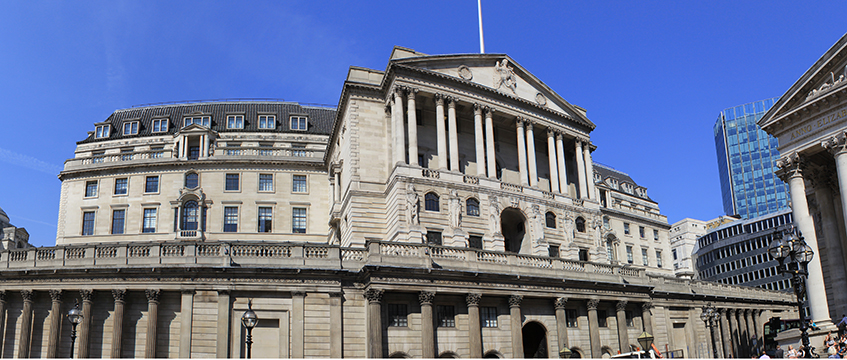UK commercial property prices will rebound in the second half of 2019, although a shock to the system could bring values down by 40% in the next two years, according to scenarios laid out in the latest Bank of England’s stress test.
The Bank of England published its annual worst-case scenario yesterday as part of its 2017 test to see whether UK banks have enough cash in reserve to withstand a shock to the system.
This five-year financial stress scenario would lead to a 40% loss in value for commercial property and a 33% fall in residential value. However, the Bank’s baseline forecast shows commercial property falling by 2.5% between now and the second quarter of 2019 followed by a 33% rise in the following seven years.
What are the stress tests and what do they show?
The Bank of England puts together a worst-case scenario every year, one that it does not expect will happen but could under the right conditions, to test whether UK banks have enough cash in reserve to withstand a shock to the system. Yesterday’s publication sets out that scenario for 2017 alongside its baseline forecasts.
Peak-to-trough falls in the five year stress test
| 2017 Five-year stress test scenario | 2016 Five-year stress test scenario | Base forecast – 10-year average | |
|---|---|---|---|
| Global GDP growth | -2.4% | -1.9% | 3.7% |
| UK GDP fall | -4.7% | -4.3% | 2% |
| UK unemployment | 9.5% | 9.5% | 4.7% |
A second biennial test was also introduced this year, which will test banks over what it sees as emerging threats outside of the typical financial cycle. It assumes these “headwinds” will continue or worsen between now and 2026. These include global trade continuing to stagnate, productivity falling and causing a slowdown in global GDP, and the UK base rate being cut to zero.
How would commercial and residential property perform under these conditions?
Commercial property prices would take a 40% dive, bottoming out in Q3 2018 in the worst-case scenario. The biggest falls, the Bank of England said, would be in the prime sector of the market where prices have stayed close to their pre-financial crisis peak. A more likely scenario outside of stressed conditions would see commercial property prices gradually fall until the second half of 2019 and then pick up again.
Residential property would have a smaller yet significant fall of 33%, which would start to rebound at the end of 2019. This is a steeper fall than the 31% in last year’s stress test because house price growth continued to outpace household income growth in 2016. As a result, if there is a shock to the system, the potential fall would be greater, the Bank of England said. Without a shock, residential prices are likely to continue rising steadily, with 45% growth expected in the next 10 years.
Overall, commercial and residential prices would be down by between 24% and 28% down at the end of a five-year stress period. This is significantly less than the 45% fall in commercial property prices during the financial crisis, but more severe than the 18% fall in residential prices between Q3 2007 and Q2 2009.
To send feedback, e-mail karl.tomusk@egi.co.uk or tweet @ktomusk or @estatesgazette











